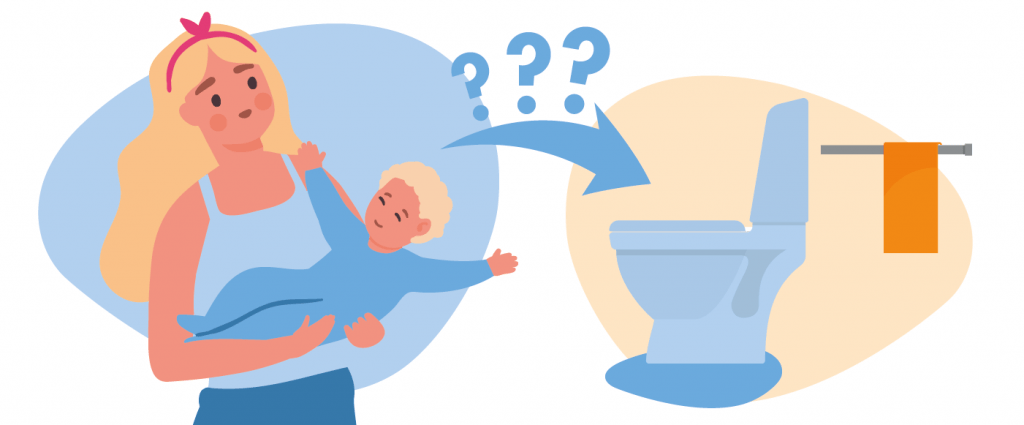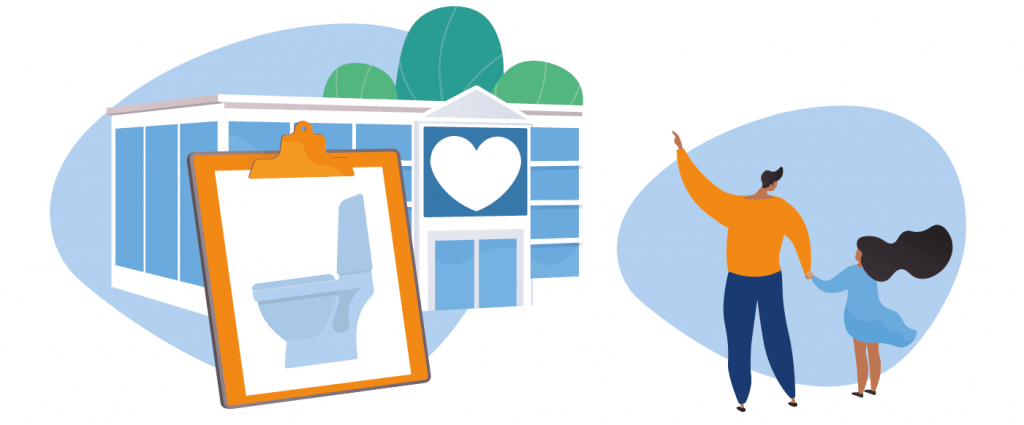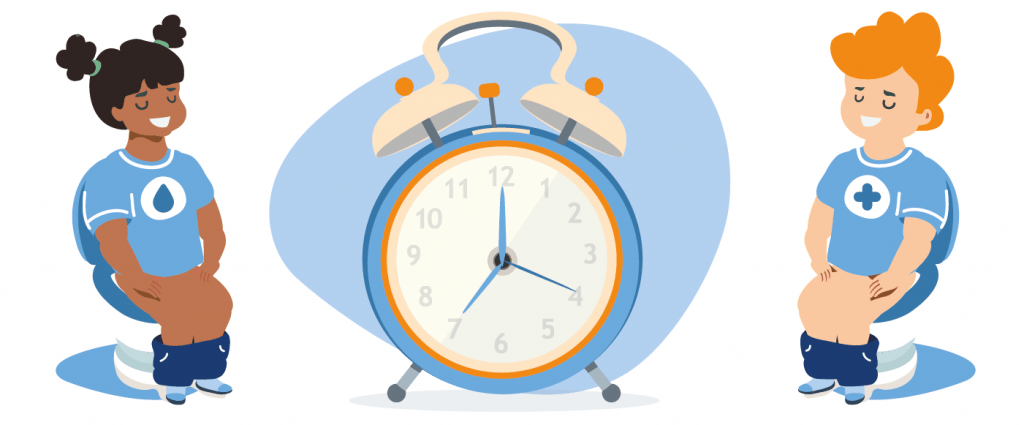How to toilet train a child with autism
Toilet training can be tricky for any parent, involving accidents and frequent dashes to the loo, and it can be even trickier with a child with autism. We’ve prepared our best tips and tricks to make the process as easy as possible.

Why and when should you start toilet training?
Toilet training involves teaching your child to recognise the signals in their body that indicate they need to urinate or go for a poo.1 It’s best to take it slowly, at your child’s pace. The best time for parents to start potty training with their child is between 18 months and 3 years old2.
The importance of toilet training
There are many benefits to toilet training, not least getting to say goodbye to nappies, including:
- independence – as parents well know, thanks to the clamour of ‘I can do it!’, toddlers have a deep desire to be independent3
- healthy habits – little ones are already learning basic personal hygiene, such as brushing their teeth
- learning opportunities – life is easier for both parent and child when you’re not on a nappy changing schedule4
Signs your child is ready for potty training
It can be difficult to know when to start toilet training, but there are some signs to look out for. These include:
- they tell you when their nappy needs changing
- the gap between wetting their nappy is at least an hour
- when they need to wee, they fidget or go somewhere hidden5
- they can dress themselves6
- they can walk well7
If your child displays any of these signs, they may well be ready to potty train!

How to toilet train a child with autism
It’s estimated that 12.2% of children in Europe have autism8,and if your child has autism, it can take longer to develop a toilet routine.9 Furthermore, they might not have the social desire to be like others nor see the point in swapping nappies for the toilet.10 Nonetheless, certain things can make the experience easier.
Creating the right environment
Certain environmental factors might make your attempt more successful. Try picking a time where things are quiet at home and give toilet training your full attention.11 If you can, waiting until the summer months might help, as your toddler can wear fewer clothes.12 Try these additional steps:
- ensure the bathroom is a calm space
- remove all distractions
- make the bathroom as comfortable as possible – consider adding footstalls, side rails or a smaller toilet seat
- put everything at your child’s level (e.g. soap and towels) to encourage independence13
- 70-90% of children on the spectrum experience sensory overload14, so think about their sensory needs – is the smell of the soap too strong? Is the lighting too bright? Etc.15

Creating a toileting routine and habit training
To create a solid toileting routine for your child, try:
- changing your child’s nappy in the bathroom so they associate it with toileting activities
- informing everyone who cares for your child (grandparents, childminders, etc.) that you are toilet training. Children with autism typically rely on routine, and this change might affect their behaviour.
- sending your toddler to nursery with extra wipes, plastic bags and clean clothes
- observing your child to see if they have a toileting pattern. Try following it by taking them to the toilet at those times
- using flashcards to explain what happens when your child goes to the toilet. Children with autism respond well to visual cues. You can find examples on the Do2Learn website
- keeping the sequence of behaviours as similar as possible, as children with autism respond well to repeated behaviours
- tailoring the praise you give to suit your child. Some children with autism respond better to an object than social praise (‘well done’)
- avoiding verbal prompts as your child may become too reliant on you for a reminder
- if your child lacks awareness, set a sand timer as a visual cue to stop them from getting off the toilet before they’re finished
- avoid using childlike terms for toileting – it can be confusing for children with autism if the terms change16
- swapping to underwear as soon as possible – this helps your little one to associate the discomfort of wet underwear after an accident with needing to urinate
- increasing your child’s fluid intake to get them to pee more often17
It may also help to swap to pull-up pants that easy for the child to put on and take off themselves. Our iD Comfy Junior range is ideal for potty training a child with autism, as they are comfortable and reliable.

Toilet training at night-time and bowel control
Bowel control and staying dry overnight are usually learned later than bladder control. Once the time is right, consider:
- some children with autism may find bowel movements frightening as they don’t understand what is happening. Try reading a fun book that explains the process, such as Everybody Poos
- having a set bedtime routine
- limiting how much your child eats and drinks in the hour before bedtime
- taking your child to the loo before they go to bed18
- use protective devices at night-time (they are also effective on long car journeys). iD has a fantastic range of soft bed and chair protection with a high level of protection
We hope these tips and tricks have given you the confidence you need to tackle toilet training with your child.
Sources
1 “Toilet Training”, Stanford Children’s Health, n.d., Source: https://www.stanfordchildrens.org/en/topic/default?id=toilet-training-90-P02300
2 “How to potty train”, NHS, 16 August 2018, Source: https://www.nhs.uk/conditions/baby/babys-development/potty-training-and-bedwetting/how-to-potty-train/
3 “Emotional Growth Needed for Toilet Training”, healthychildren, 11 February 2009, Source: https://www.healthychildren.org/English/ages-stages/toddler/toilet-training/Pages/Emotional-Growth-Needed-For-Toilet-Training.aspx
4 “Benefits of Toilet Training in Child Care”, Kids World Kindy, n.d., Source: https://www.kidsworldkindy.com.au/benefits-of-toilet-training/
5 “How to potty train”, NHS, 16 August 2018, Source: https://www.nhs.uk/conditions/baby/babys-development/potty-training-and-bedwetting/how-to-potty-train/
6 “Developmental milestone: Toilet training (age 2)”, Darienne Hosley Stewart, n.d., Source: https://www.babycenter.com/child/development/developmental-milestone-toilet-training-age-2_63952
7 “Toilet Training”, Stanford Children’s Health, n.d., Source: https://www.stanfordchildrens.org/en/topic/default?id=toilet-training-90-P02300
8 “Autism Spectrum Disorders in the European Union (ASDEU)”, Manuel Posada de la Paz, 12 September 2018, Source: http://asdeu.eu/wp-content/uploads/2016/12/ASDEUExecSummary27September2018.pdf
9 “Toileting – a guide for parents and carers”, National Autistic Society, 14 August 2020, Source: https://www.autism.org.uk/advice-and-guidance/topics/behaviour/toileting/parents
10 Ibid
11 “Toilet Training”, iHV Parent Tips, n.d., Source: https://www.foundationyears.org.uk/files/2014/10/PT_Toilet-Training_V4.pdf
12 Ibid
13 “Toileting – a guide for parents and carers”, National Autistic Society, 14 August 2020, Source: https://www.autism.org.uk/advice-and-guidance/topics/behaviour/toileting/parents
14 “Tackling problems with toilet training autistic children”, Alina Lynden, n.d., Source: https://www.eric.org.uk/blog/tackling-problems-with-toilet-training-autistic-children
15 “Toileting – a guide for parents and carers”, National Autistic Society, 14 August 2020, Source: https://www.autism.org.uk/advice-and-guidance/topics/behaviour/toileting/parents
16 Ibid
17 “Seven toilet training tips that help nonverbal kids with autism”, autism speaks, 12 February 2016, Source: https://www.autismspeaks.org/expert-opinion/seven-toilet-training-tips-help-nonverbal-kids-autism
18 “Toileting – a guide for parents and carers”, National Autistic Society, 14 August 2020, Source: https://www.autism.org.uk/advice-and-guidance/topics/behaviour/toileting/parents
19 “Potty training problems”, NHS, 16 August 2018, Source: https://www.nhs.uk/conditions/baby/babys-development/potty-training-and-bedwetting/potty-training-problems/
